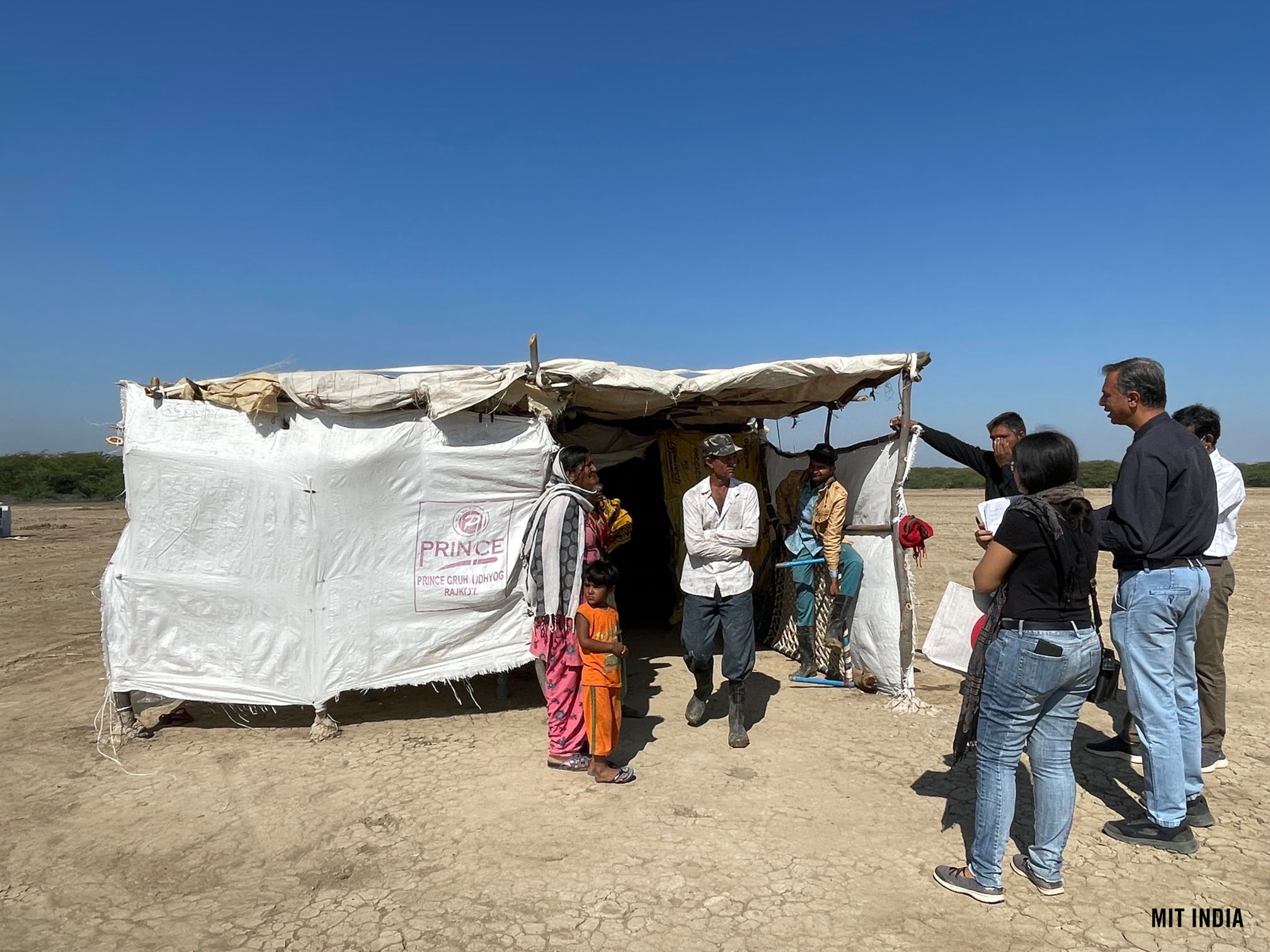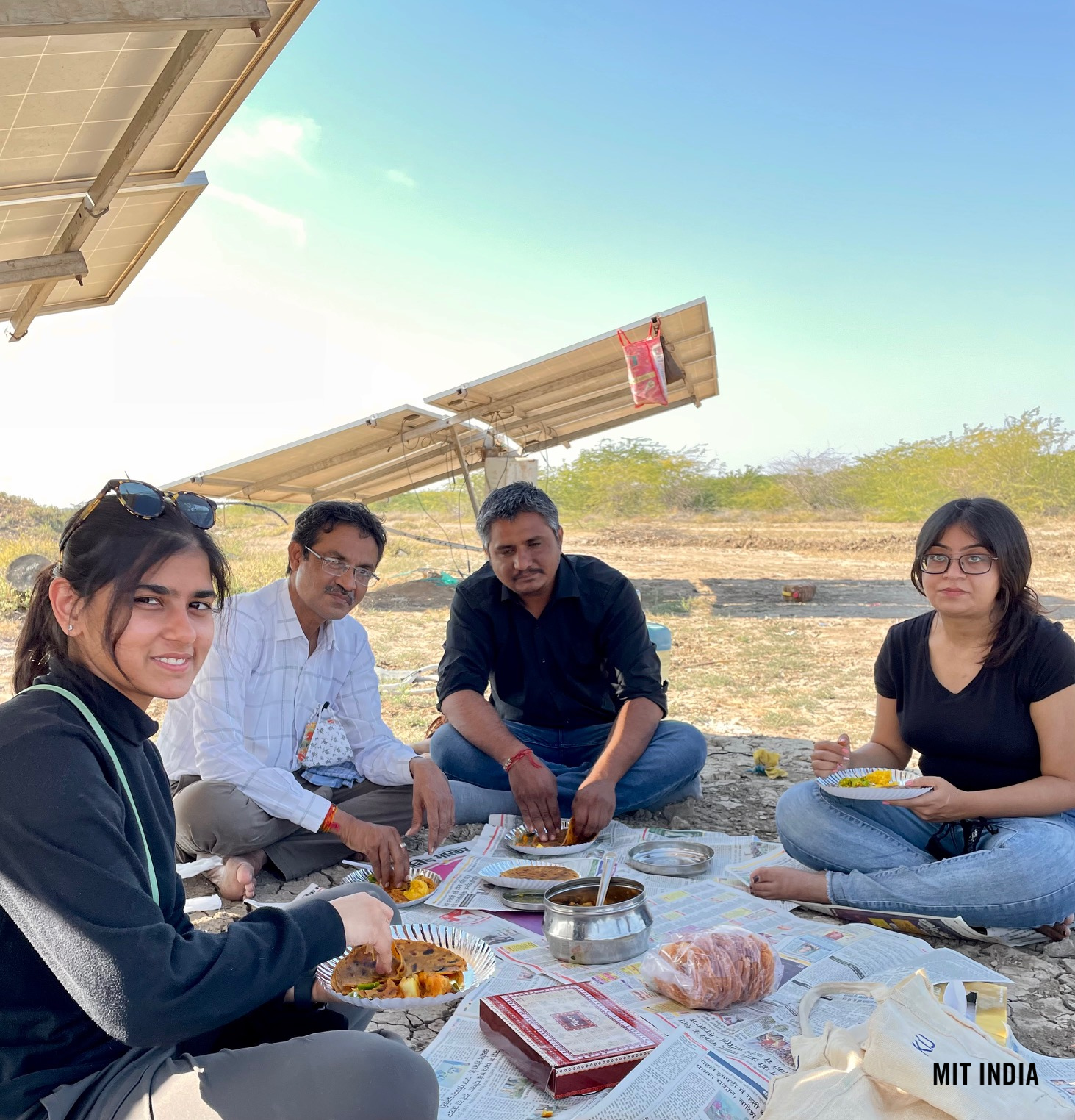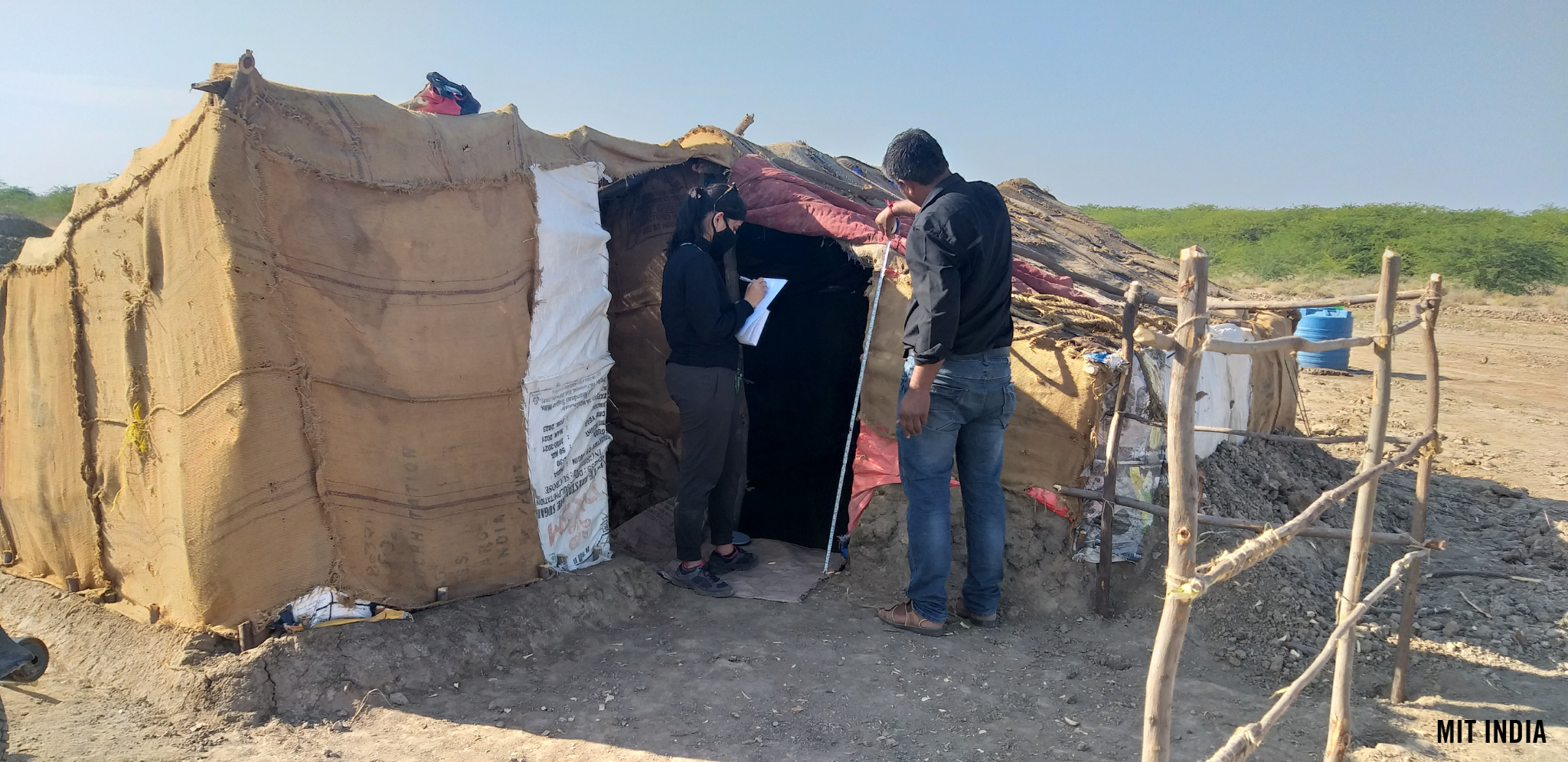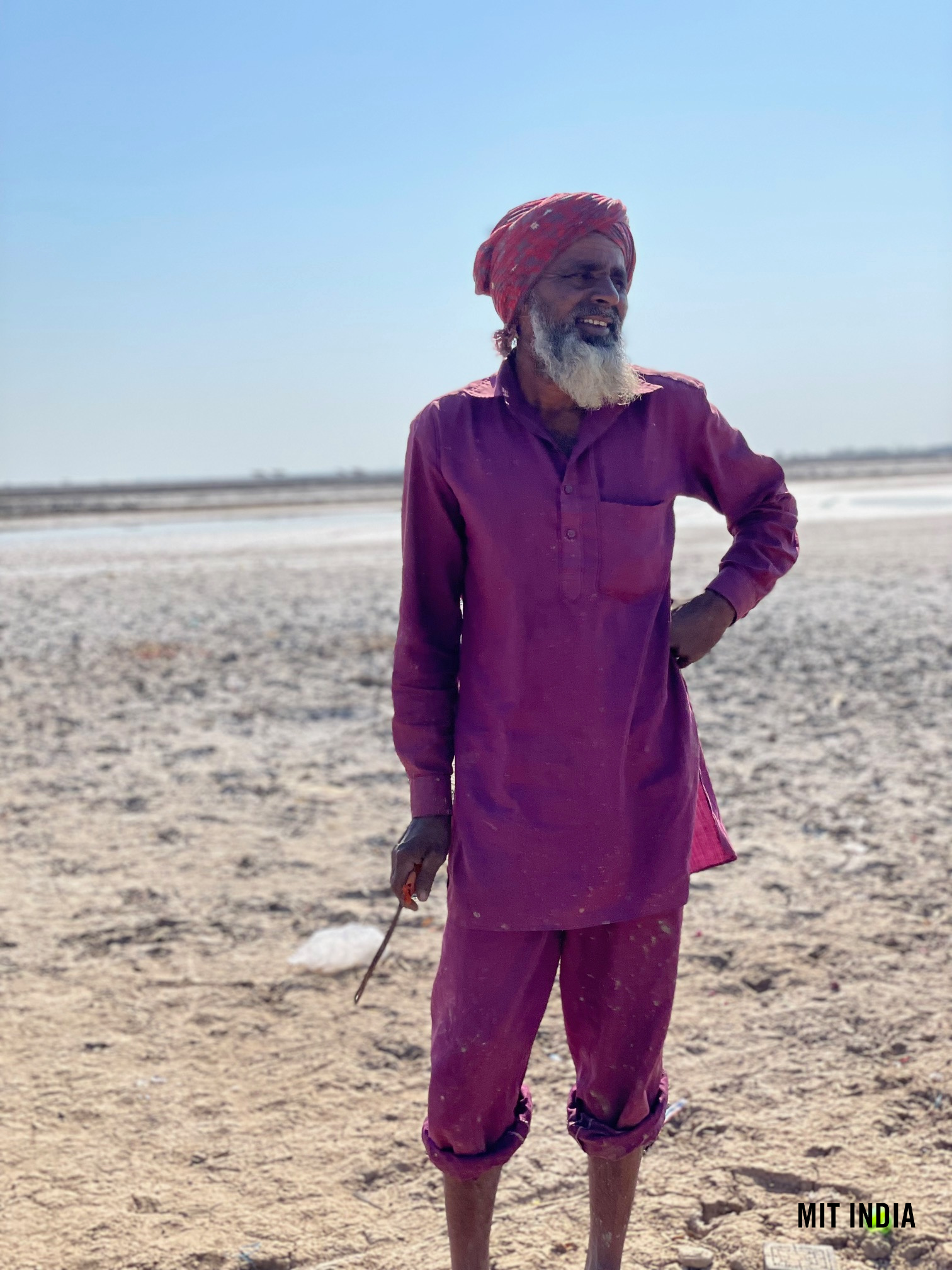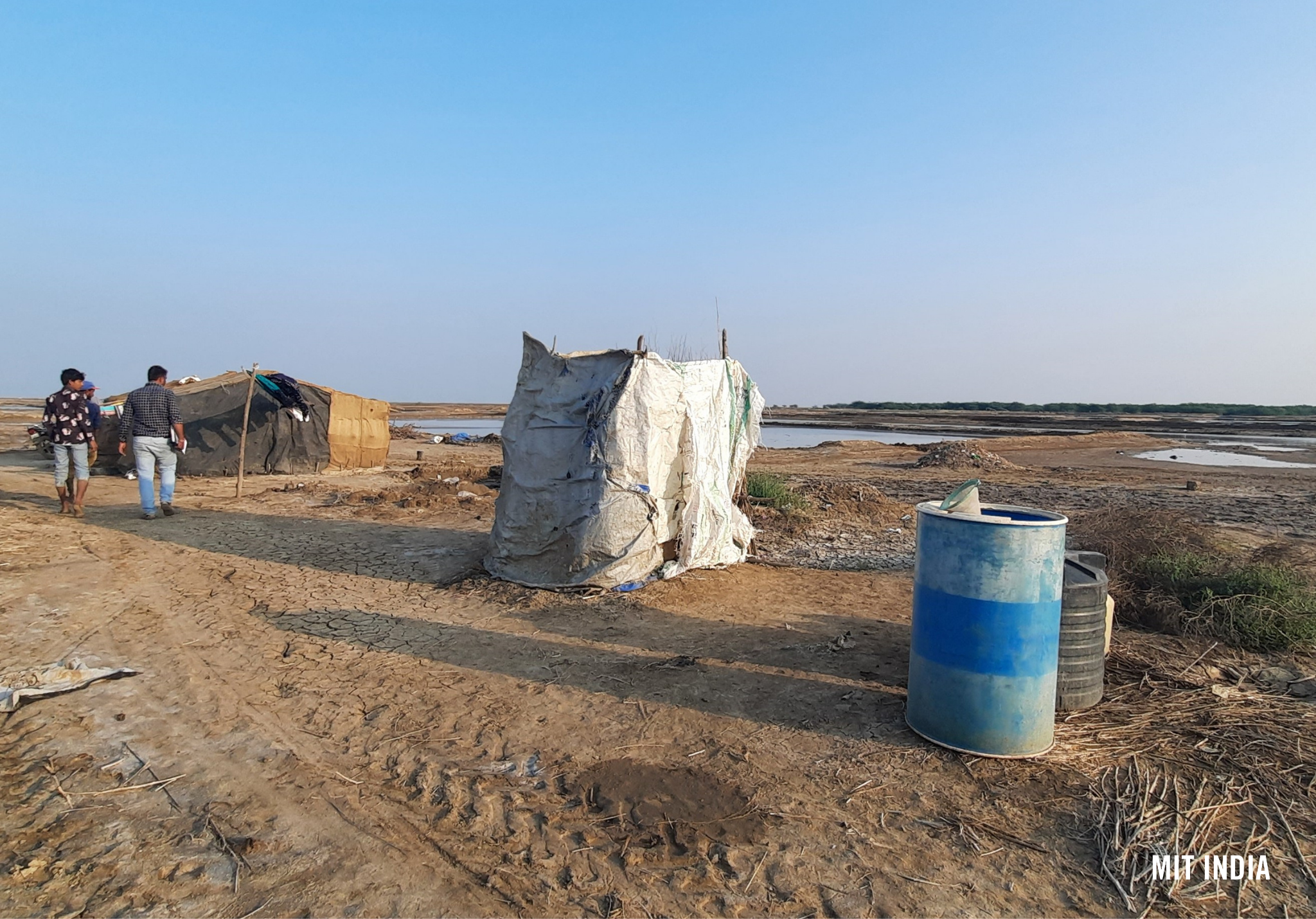- January 28, 2022
We recently caught up with former MIT India intern, Mona VijayKumar (Architecture Studies and Urbanism, ‘22) who traveled to India over IAP to further an independent research project that she worked on remotely through our program in summer 2021. Mona’s research involves a social venture, Project Chaaya, that aims to empower and co-design mobile shelters for the salt workers of Little Rann of Kutch (LRK) in India. Beginning as an academic research project in 2020, Project Chaaya is now a collaborative research project involving The Hunnarshala Foundation and Radhakrishnan as part of MIT-India and MISTI. Over the IAP 2021 break, Mona and the rest of the team visited the LRK where they conducted interviews with salt workers, documented their shelters to scale, and discussed initial design ideas with the community for a mobile shelter. Reflecting on starting the work through her internship remotely last summer, Mona said that it “provided the support and time to connect with local organizations and community partners” before getting the opportunity to conduct research in the field.
Little Rann of Kutch is a region with 50,000+ salt workers (Agariyas), who make up one of the largest and oldest salt harvesting communities, contributing to 30% of salt production in India. The salt workers spend October-June in the salt pans to harvest before returning to the villages for July-September as the landscape gets fully inundated every year. For workers, food and water supplies are a far distance away and shelters are expensive, lack adequate infrastructure for the extreme climate, and are unaccommodating to larger families. Mona says, “due to the unforgiving expanse of the landscape and minimal support from the government/institutions, the salt workers are devoid of basic amenities like shelter, sanitation and care”.
When asked what the most rewarding part of her experience was, Mona shared, “the most rewarding experience has been the time spent in the LRK region with the salt workers. Their current shelters, although not adequate in strength and thermal comfort, were built out of local materials and applied knowledge. Having been inspired by their construction technique, we believe that the design we propose has to be an improvised version of the existing, rather than an external technique that is unfamiliar to the community. My biggest support on the field has also been the team of Hunnarshala Foundation- Tejas Sir, Mukesh bhai, Pradip Bhai, Raessa Ben and Meet bhai”.
Many students are learning what it is like to conduct research in the field after working remotely during the pandemic. “Documenting the shelters and investigating the landscape of Rann in-person revealed new insights to the project that were not evident during the literature study”, reflected Mona. The project will continue to move forward this spring when they will begin to process the design ideas shared by the community and develop the design for prototyping on the ground. After this, the team aims to reach out to potential investors, local industries/organizations, and intergovernmental organizations to seek out support for Project Chaaya.
